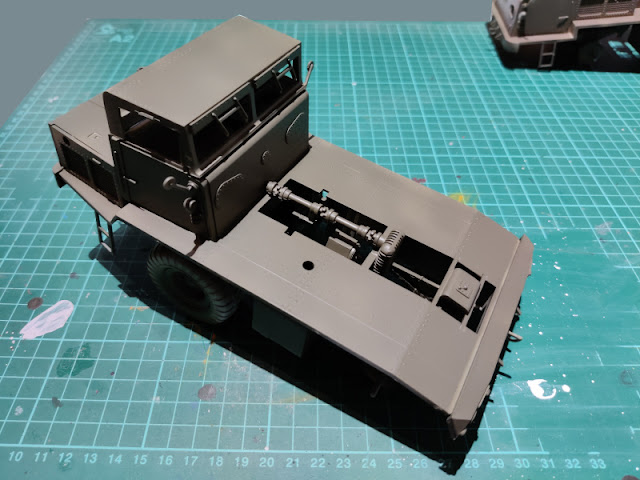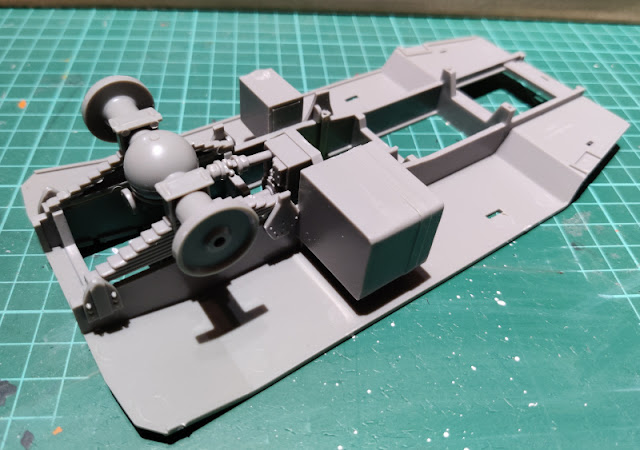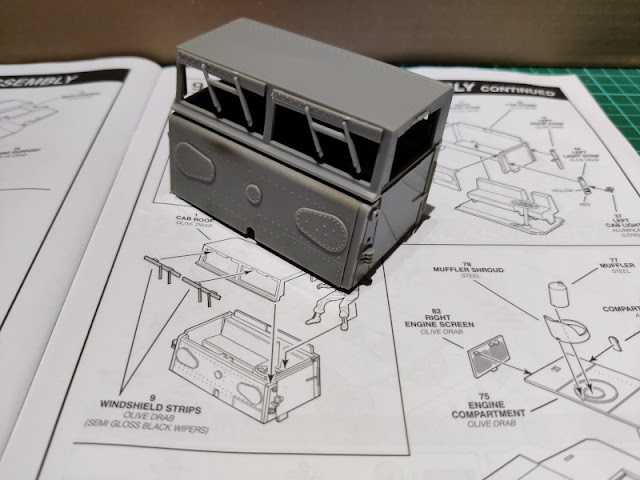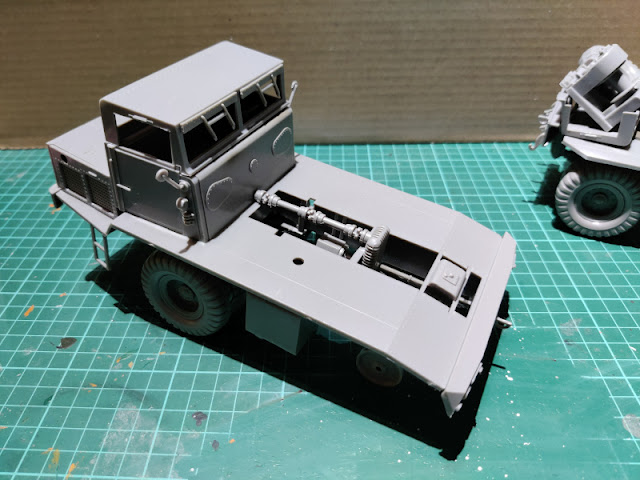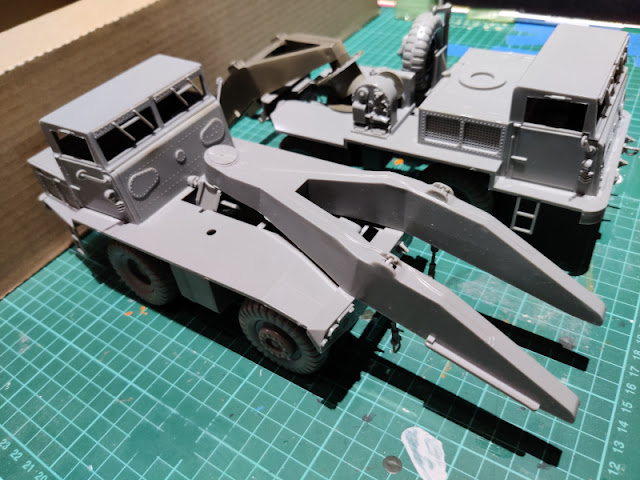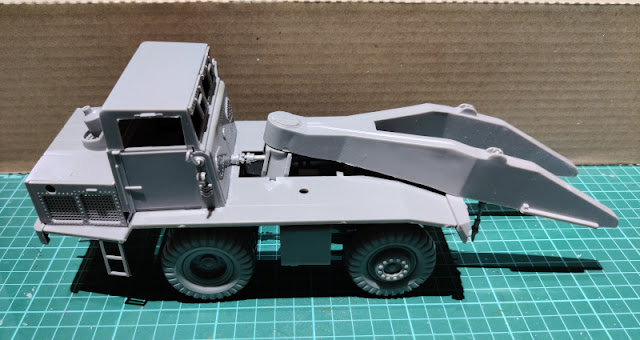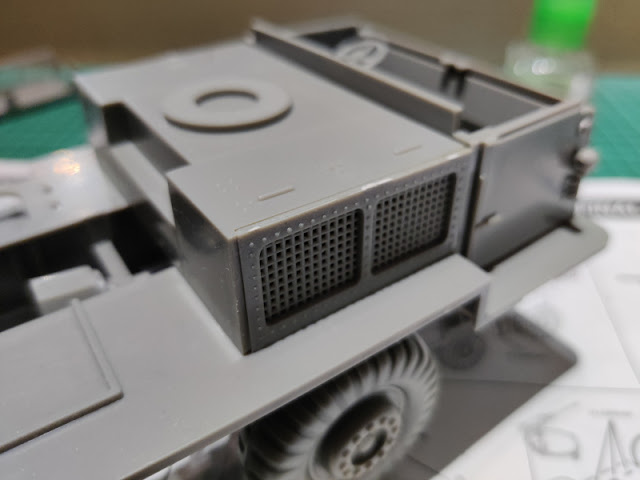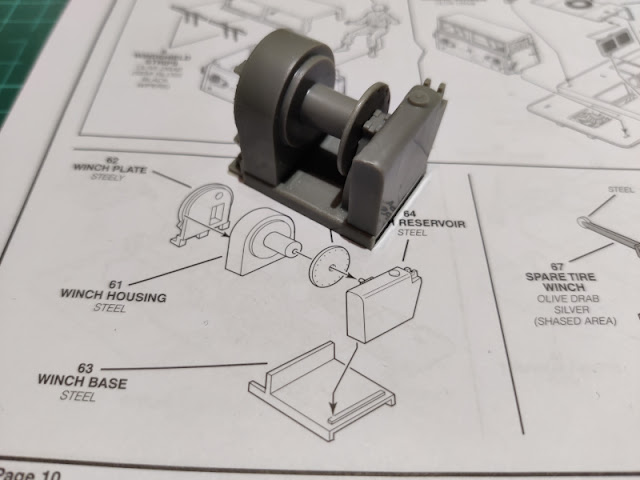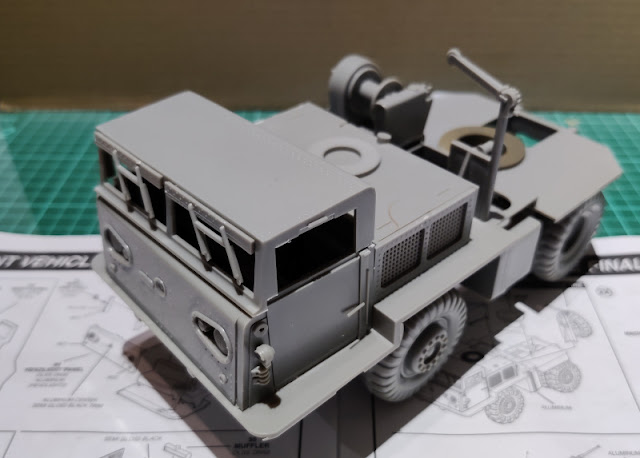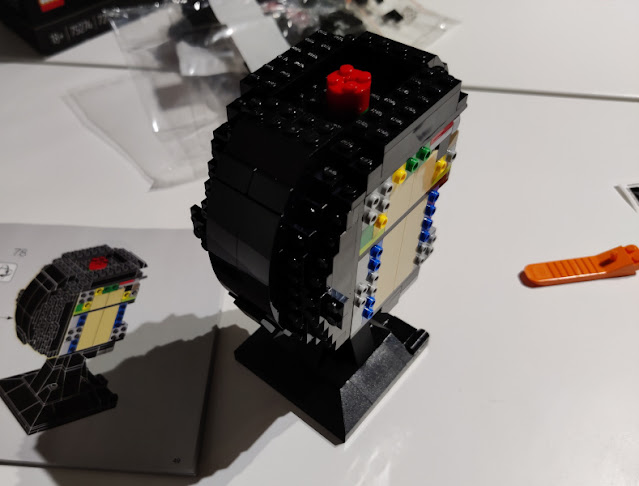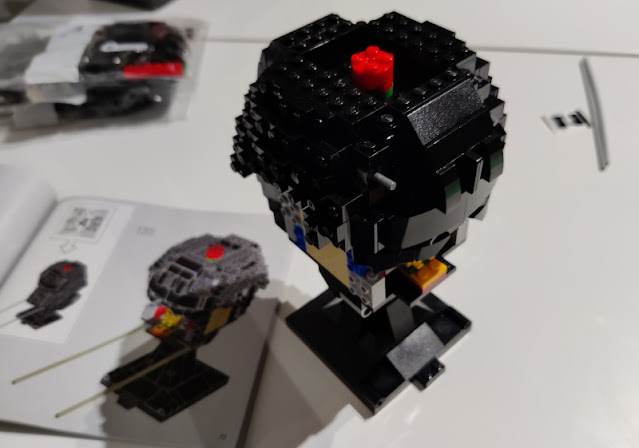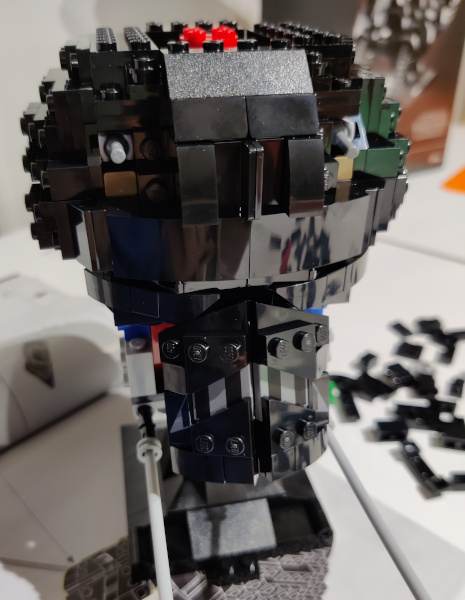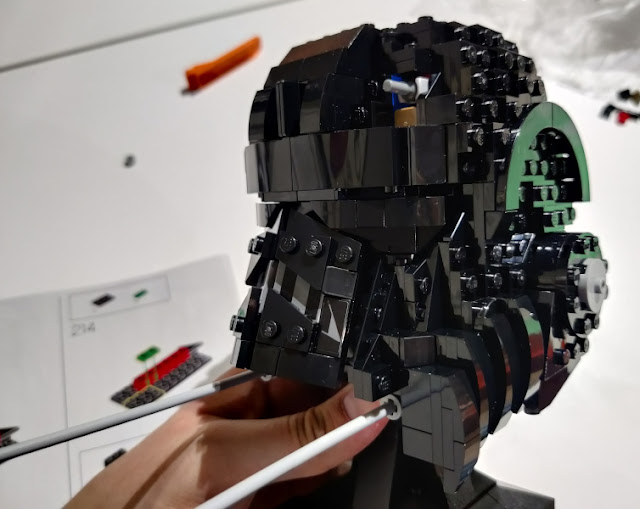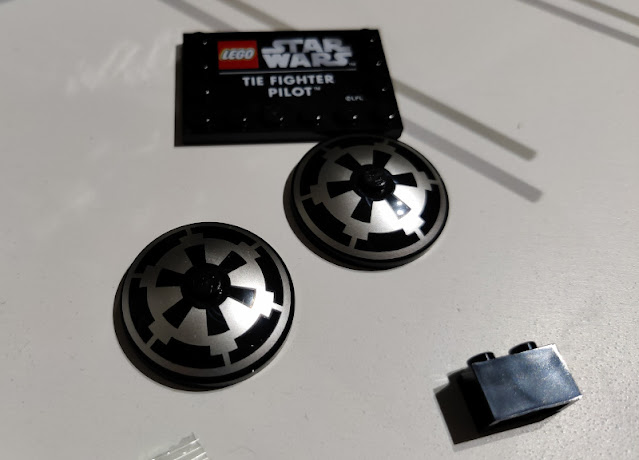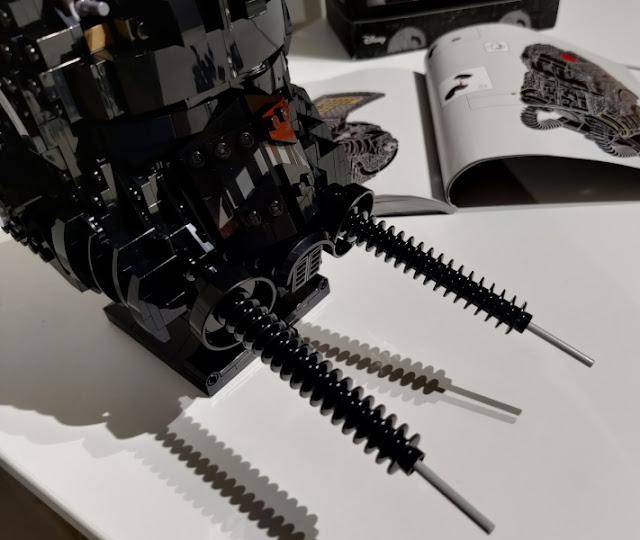The most boring paintjob ever?
As I've complained a few times, this flat olive green scheme wasn't the most exciting thing to paint. Even though I wasn't going to follow the instructions to the last detail, I didn't feel like doing a random US Army camo scheme from the sixties, either.
Then again, a three-tone NATO pattern wouldn't have been too far off, unless my memory failed again. Maybe the safest option was to keep it in boring monocolour, but tone down the designer's bright, large and clean steel / aluminium surfaces.
Green
I started by painting the wheel hubs first. The first in line were the tow truck front wheels and the spare wheel hub that were still unattached. What I didn't take pics of were the cabin roofs that I painted separately from the outside and the inside.
The bottoms of the vehicles were pretty simple to paint, the strange angles and of course the rear wheels were blocking the paintflow from certain angles, so I had to paint this way and that way sometimes. My goal was to get some kind of variety inside the flatness somehow. I decided not to strive for perfection on this first painting run, but to instead fix up any issues later on. Right now I wanted a good enough general coverage.
Top sides
After letting the previous paintjobs to air-dry overnight, I switched to the side where the sun was supposed to shine occasionally. Earlier I had already painted small parts of the front vehicle, so wouldn't have to fight those right now.
While working on the more visible parts of the vehicles I was starting to run low on paint, so I concentrated even more on the general coverage than I had planned to, with the cost of the opacity. With its more broken forms the first vehicle showed the results of this choice more clearly than the second one, which ended up looking somewhat better.
This last photo showed where my painting process ended when I ran out of paint. I had to take an intedetermined break because I didn't go by the office during the corona season that often (Hobby Point, my royal provider, was located pretty near), and I wasn't in such a rush that I had felt the need to order paints to be delivered home, either. Ordering almost always had the funny habit of leading to the infamous "
oh, I need those too" effect...
You, esteemed reader, have hopefully not noticed a thing, thanks to my post buffer.

















